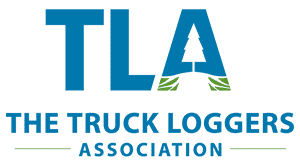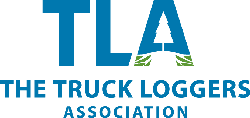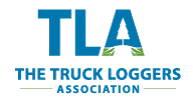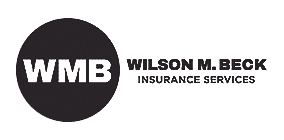
First Nations In Forestry.
First Nations in British Columbia play a significant role in today’s modern forest industry. Below are recent articles in Truck LoggerBC magazine that highlight the different aspects of First Nations involvement and, in particular, highlight good, working partnerships between First Nations and non-First Nations in BC’s working forest
The TLA’s Aboriginal Affairs committee developed the following document to be used as a source of information for consideration when creating a working agreement to carry out activities associated with First Nations license.
How To Create A Good Working Agreement
RELATED ARTICLES.
Working With First Nations (Truck LoggerBC, Winter 2021)
Working with First Nation governments and its businesses can result in a powerful partnership with positive results for all involved. However, the partners’ goals and objectives are often very different from one another. As such, it’s important that all partners keep this in mind when they structure their arrangement and con-duct their mutual business arrangement.
Haste Makes Waste: A Flawed Consultation Process (Truck LoggerBC, Fall 2021)
Forestry Community: Pacheedaht First Nation (Truck LoggerBC, Fall 2021)
Working Together for Win-Win Fibre Solutions (Truck LoggerBC, Summer 2021)
A Skilled, Diverse Indigenous Workforce is the Key to addressing “Déjà vu all over again” (Truck LoggerBC, Spring 2021)
A new government brings with it a renewed mandate for every ministry “to create opportunities for Indigenous peoples to be full partners in the economy.” In Premier Horgan’s mandate letter to the new Minister of Forests, Lands, Natural Resource Operations and Rural Development Katrine Conroy, one area of focus is on the transition of the forestry sector from a high-volume to high-value production, which includes increasing value-added initiatives to en-courage fibre utilization in an era of declining timber supply.
Working Agreements for First Nations Tenure Holders (Truck LoggerBC, Winter 2020)
Industry Leaders’ Vision for the Future of the Forest Industry (Truck LoggerBC, Winter 2020)
Indigenous Best Practices and Learnings: The Good and the Bad (Truck LoggerBC, Fall 2020)
Forestry Community: Nanwakolas (Truck LoggerBC, Spring 2020)
Over Coming the Barrier of a Driver’s licence for Aboriginal Workers (Truck LoggerBC, Summer 2019)
Addressing Barriers to Employment of Aboriginals (Truck LoggerBC, Summer 2019)
Is First Nations the Solution to Job Shortage? (Truck LoggerBC, Spring 2019)
Working Guidelines to Use in Developing Relationships with First Nations (Truck LoggerBC, Summer 2016)
First Nations and Forestry: Working in Industry Today (Truck LoggerBC, Spring 2016)
Over the past 30 years Gerry Merkel has put a lot of effort into encouraging young Canadians from First Nations to look to the woods as a career option—it’s good for the land and it’s good for the people. “I believe the standard and care of the land has improved significantly now that so many Aboriginals are involved in the process,” says Merkel, president and CEO of the Tahltan Nation Development Corporation and one of Canada’s first aboriginal registered forest professionals. Today, an increasing number of young people from First Nations are finding that working in the forest not only provides them with good incomes, but reconnects them with their cultural heritage and values
First Nations Elders and Forestry: A Happily Remembered History (Truck LoggerBC, Winter 2016)
Over the past 30 years Gerry Merkel has put a lot of effort into encouraging young Canadians from First Nations to look to the woods as a career option—it’s good for the land and it’s good for the people. “I believe the standard and care of the land has improved significantly now that so many Aboriginals are involved in the process,” says Merkel, president and CEO of the Tahltan Nation Development Corporation and one of Canada’s first aboriginal registered forest professionals. Today, an increasing number of young people from First Nations are finding that working in the forest not only provides them with good incomes, but reconnects them with their cultural heritage and values.
Working Together: Tourism, First Nations and Forestry (Truck LoggerBC, Fall 2015)
At the mouth of Orford River, the brilliant hue of glacier-fed, turquoise coloured fresh water contrasts with darker sea water of Bute Inlet. But the mixing of the fresh and salt waters are not the only contrasting thing at Orford these days. There is also an unlikely triad working together—forestry, First Nations and tourism.
Now, First Nations working in forestry is not unusual these days. And neither is First Nations working in tourism. But forestry and tourism are still unfamiliar partners. That said there’s a new age dawning in Campbell River and indeed along the coast between BC’s two most famous industries.
Building Bridges: Wuikinuxv Nation and the Johnson Creek Project (Truck LoggerBC, Summer 2015)
We’re in the dining room on the Interfor barge camp at Johnson Creek, south of Rivers Inlet on BC’s midcoast. Ted Walkus is showing us pictures of the Chinook that return to the Whonnock River each year—seventy and eighty pound monsters. We’re impressed.
These Whonnock tyee mean more than just a healthy return on a salmon stream to Walkus. The Hereditary Chief of his family in the Wuikinuxv Nation, Walkus is proud of the work being done at the Whonnock hatchery. The monster fish are emblematic of a rebirth for his community, because the health of the Wuikinuxv Nation is intimately tied to the natural resources of their territory.
First Nations and Licensees: Looking at Today’s Successful Partnerships (Truck LoggerBC, Winter 2015)
When Leonard Munt arrived on Haida Gwaii in the fall of 2003, relations between licensees and the Haida could best be described as dysfunctional. They continued to deteriorate and two years later the Haida, together with the island communities, set up a blockade called “Island Spirits Rising” and forestry operations ground to a halt. The blockade had been sparked by an announcement that Weyerhaeuser was selling its timber rights and assets to Torontobased Brascan. However, it was further fueled by longstanding Haida grievances about inadequate consultation and what the coastal First Nation considered to be unsustainable forest practices.
Meet Kelsey Pelegrin, Poster Child for Tomorrow’s Forest Industry Workforce (Truck LoggerBC, Fall 2014)
Kelsey Pelegrin is the kind of employee the forest industry needs to attract. As a young aboriginal woman she’s part of a demographic that could help meet the industry’s labour market needs. She’s also talented and ambitious, coming second in a class of 17 heavy equipment trainees.
But it wasn’t talent or force of will alone that got Pelegrin into the operator’s seat at K&L Contracting as soon as she graduated. She had some help with a targeted training program. It’s this kind of support that others in the industry are hoping will lead to more jobs for First Nations men and women in the near future.
Forestry Partnerships: First Nations, Contractors and Trust (Truck LoggerBC, Summer 2014)
Kelsey Pelegrin is the kind of employee the forest industry needs to attract. As a young aboriginal woman she’s part of a demographic that could help meet the industry’s labour market needs. She’s also talented and ambitious, coming second in a class of 17 heavy equipment trainees.
But it wasn’t talent or force of will alone that got Pelegrin into the operator’s seat at K&L Contracting as soon as she graduated. She had some help with a targeted training program. It’s this kind of support that others in the industry are hoping will lead to more jobs for First Nations men and women in the near future.
Good Things Come in Threes: Training, Partnerships and Spotted Owl Friendly Logging (Truck LoggerBC, Spring 2014)
Between training, partnerships and spotted-owl-friendly logging, there’s a lot of good news forestry going on the Lil’wat First Nation territory near Mount Currie, just past Pemberton.
Lil’Wat First Nation has developed tenure within their traditional territory and now has three different types—a non-replaceable forest license, two woodlots and a regular forest license making up an annual allowable cut (AAC) of 65,000 m3. Klay Tindall, Forest Operations Manager for Lil’wat Forestry Ventures LP, said the final goal is have all of the different licences amalgamated into one First Nations woodland licence—an area based, long term forest tenure unique to First Nations’ interest in the land and resources.
Blockades: Right? Wrong? Both? (Truck LoggerBC, Winter 2014)
In the Canadian movie Two Indians Talking, two young native men debate the merits of using roadblocks to get what they believe are their rightful entitlements. Eventually the question emerges, “When you do something for the right reasons, does that make it the right thing to do?”
Off-screen, Chief Joe Alphonse of the Tsilhqot’in National Government in Williams Lake has a ready answer. Yes, he says, roadblocks are necessary and serve a useful purpose. “When you have a roadblock it does work; it brings attention to the issue,” he says. “The government does not want to look bad in public and unfortunately roadblocks are the only way to get them to do anything. Talking to them in good faith means nothing to them.”




























Get Social